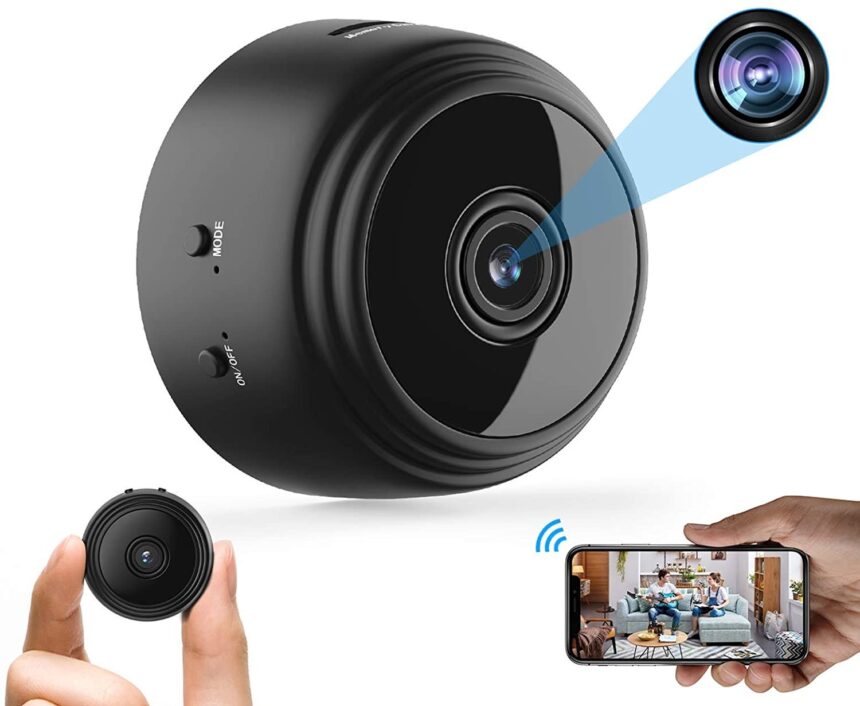In an age where security is paramount, installing home cameras has become a crucial step for homeowners looking to protect their property and loved ones. With various options available, the installation process can be daunting. This article will demystify home camera installation, offering insights into types of cameras, benefits, a detailed installation guide, and answers to common questions.
Why Install Home Cameras?
Before diving into the installation process, it’s essential to understand the benefits of having a home camera system:
1. Enhanced Security
Home cameras act as a deterrent to potential intruders. The visible presence of cameras can discourage criminal activity, helping to keep your home safe.
2. Remote Monitoring
Many modern camera systems allow you to monitor your home remotely via smartphones or tablets. This feature enables you to keep an eye on your property from anywhere in the world.
3. Evidence Collection
In the unfortunate event of a burglary or other crime, security cameras can provide valuable evidence, such as video footage that can be shared with law enforcement.
4. Insurance Benefits
Having a security camera system can potentially lower your homeowner’s insurance premium. Many insurance companies offer discounts to policyholders with monitored security systems.
5. Peace of Mind
Knowing you have a reliable surveillance system in place can provide peace of mind, especially for families with children or elderly members who may need extra supervision.
Types of Home Cameras
Understanding the different types of home cameras available can help you choose the right system for your needs:
1. Wired Cameras
These cameras are connected directly to your home’s power supply and can offer reliable performance. They are typically harder to tamper with, making them a secure option for homeowners.
2. Wireless Cameras
Wireless cameras connect to your home Wi-Fi network, making installation easier and more flexible. However, they require a power source and may be susceptible to interference from other wireless devices.
3. Indoor Cameras
Indoor cameras are designed for monitoring the interior of your home. They often feature two-way audio, allowing for communication with family members or pets while you’re away.
4. Outdoor Cameras
Built to withstand the elements, outdoor cameras are designed to provide surveillance outside your home. They typically offer weatherproof housing and enhanced night vision capabilities.
5. PTZ Cameras (Pan-Tilt-Zoom)
These cameras can be remotely controlled to pan, tilt, and zoom in on specific areas, providing a flexible monitoring solution for larger properties.
6. Smart Cameras
Equipped with advanced features like motion detection, facial recognition, and integration with smart home devices, smart cameras offer enhanced security capabilities.
Planning Your Home Camera Installation
Before installation, planning is essential to ensure optimal coverage and functionality. Here’s how to prepare:
1. Assess Your Security Needs
Identify the areas you want to monitor. Common locations include entry points, driveways, and high-traffic areas.
2. Determine Camera Placement
Consider the best placement for each camera. Aim for locations that provide a clear view of the target area while minimizing obstructions.
3. Consider Lighting Conditions
Evaluate the lighting in each area. Low-light environments may require cameras with infrared capabilities or additional lighting.
4. Review Power Source Options
Ensure that each camera location has access to a power source. For wireless cameras, ensure a strong Wi-Fi signal in the area.
The Home Camera Installation Process
Now that you’ve planned your installation, here’s a step-by-step guide to installing home cameras:
Step 1: Gather Necessary Tools and Materials
Before starting the installation, gather all necessary tools, including:
- Drill
- Screwdriver
- Level
- Ladder
- Tape measure
- Cable ties (if using wired cameras)
- Smartphone or tablet for setup
Step 2: Install Wired Cameras (if applicable)
- Drill Holes for Cables:
If using wired cameras, drill holes where you will run the cables. - Run the Cables:
Feed the cables through the drilled holes to the camera locations. - Connect the Cameras:
Follow the manufacturer’s instructions to connect the cameras to the power supply and recording device.
Step 3: Mount the Cameras
- Mark the Position:
Use a level to mark the camera position on the wall. - Drill Holes for Mounting Brackets:
If using screws, drill holes in the marked locations. - Secure the Cameras:
Attach the mounting brackets and secure the cameras in place.
Step 4: Install Wireless Cameras
- Choose the Location:
Place the camera at the desired location, ensuring a clear view. - Power the Camera:
Connect the camera to a power outlet. - Connect to Wi-Fi:
Follow the manufacturer’s instructions to connect the camera to your home Wi-Fi network.
Step 5: Configure the Camera Settings
- Download the App:
Most modern cameras come with a companion app. Download it on your smartphone or tablet. - Follow Setup Instructions:
Use the app to configure the camera settings, including motion detection, notifications, and recording preferences. - Test the Cameras:
After setup, test each camera to ensure they are working correctly. Check the live feed, adjust angles, and verify notifications are functioning.
Maintenance Tips for Your Home Camera System
To keep your home camera system operating effectively, follow these maintenance tips:
1. Regular Cleaning
Dust and debris can obstruct the camera lens. Clean your cameras regularly using a soft cloth.
2. Check Firmware Updates
Manufacturers often release firmware updates to enhance security and functionality. Check for updates periodically to keep your system current.
3. Test Functionality
Regularly test your cameras to ensure they are recording and transmitting images correctly.
4. Review Camera Placement
As your home evolves, re-evaluate your camera placement to ensure optimal coverage for changing environments.
Conclusion: Empower Your Home Security
Installing a home camera system is a proactive step towards enhancing your home’s security. By understanding the types of cameras available, carefully planning your installation, and following best practices, you can create a robust surveillance system tailored to your needs. The peace of mind that comes with knowing your home is monitored is invaluable, making the investment in a camera system worthwhile.
FAQs About Home Camera Installation
1. How much does it cost to install a home camera system?
The cost of a home camera system varies based on the type and number of cameras, installation fees, and any additional features. Basic systems may start around $200, while comprehensive setups can exceed $1,000.
2. Can I install a home camera system myself?
Yes, many homeowners choose to install their camera systems, especially wireless models. However, professional installation is recommended for complex systems or those requiring wiring.
3. Do I need an internet connection for my cameras?
Wireless cameras typically require a stable internet connection for remote access and notifications. Wired cameras do not need an internet connection but can benefit from it for remote monitoring.
4. How long do home security cameras record?
Recording duration depends on the storage capacity of your system. Many systems offer options for cloud storage or local storage, with recording durations ranging from a few days to several weeks.
5. Are home cameras effective at deterring crime?
Yes, the presence of visible cameras can deter potential intruders. Studies show that homes with security cameras are less likely to be targeted for burglary.
6. Can I access my cameras remotely?
Most modern home camera systems offer remote access through mobile apps, allowing you to view live feeds, receive notifications, and manage settings from anywhere.







